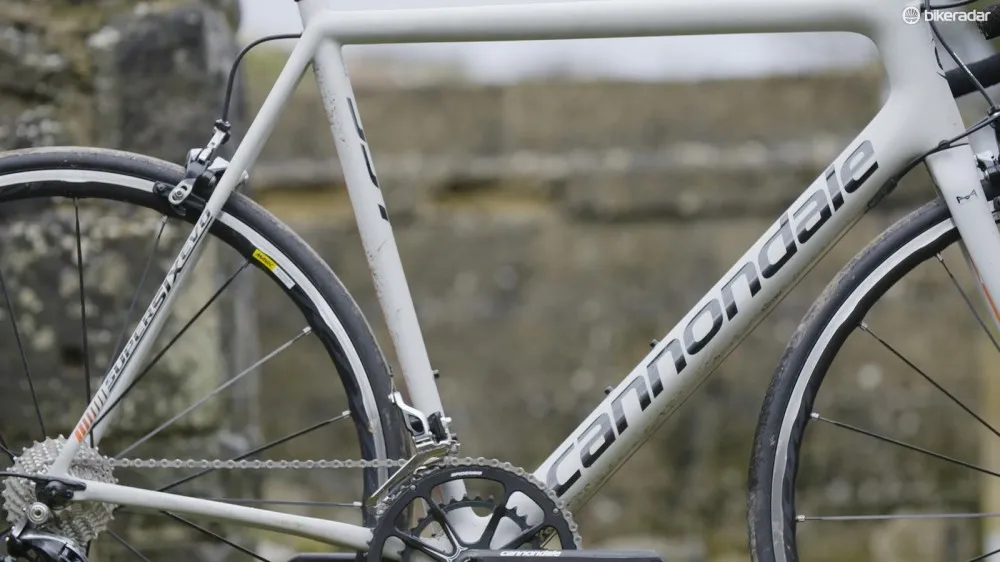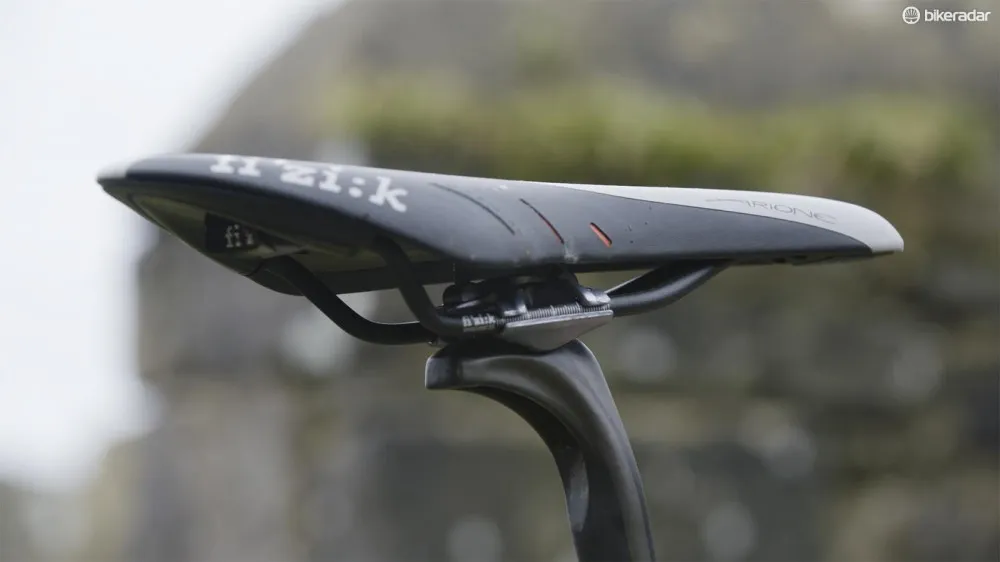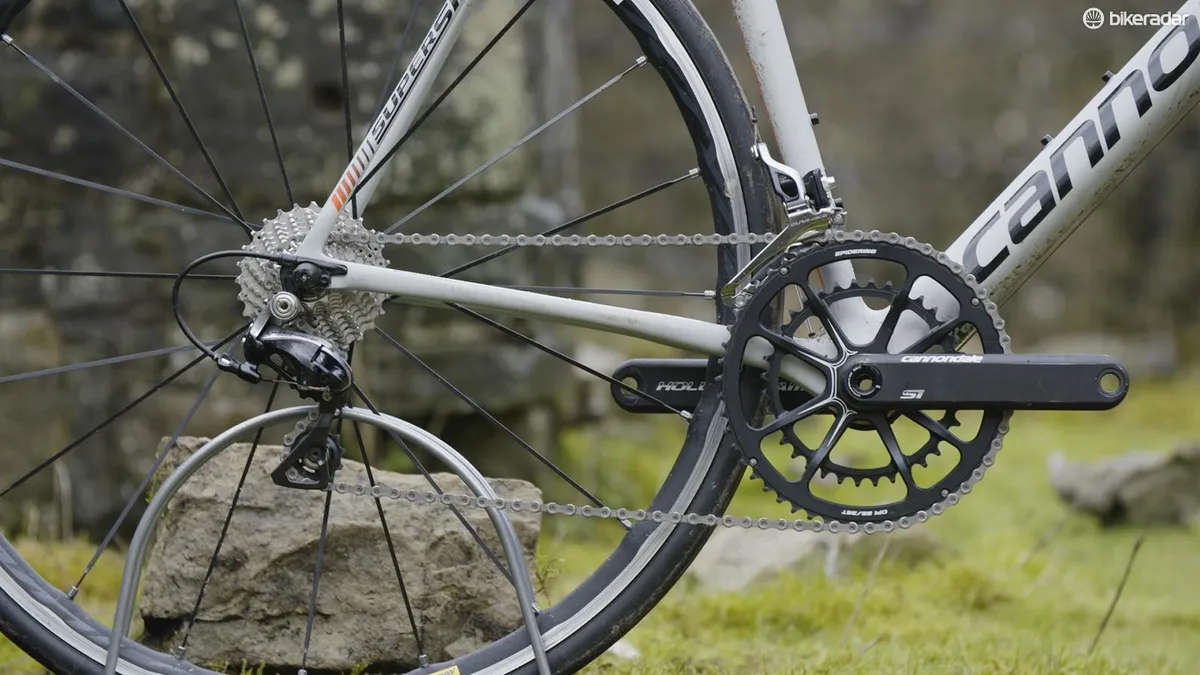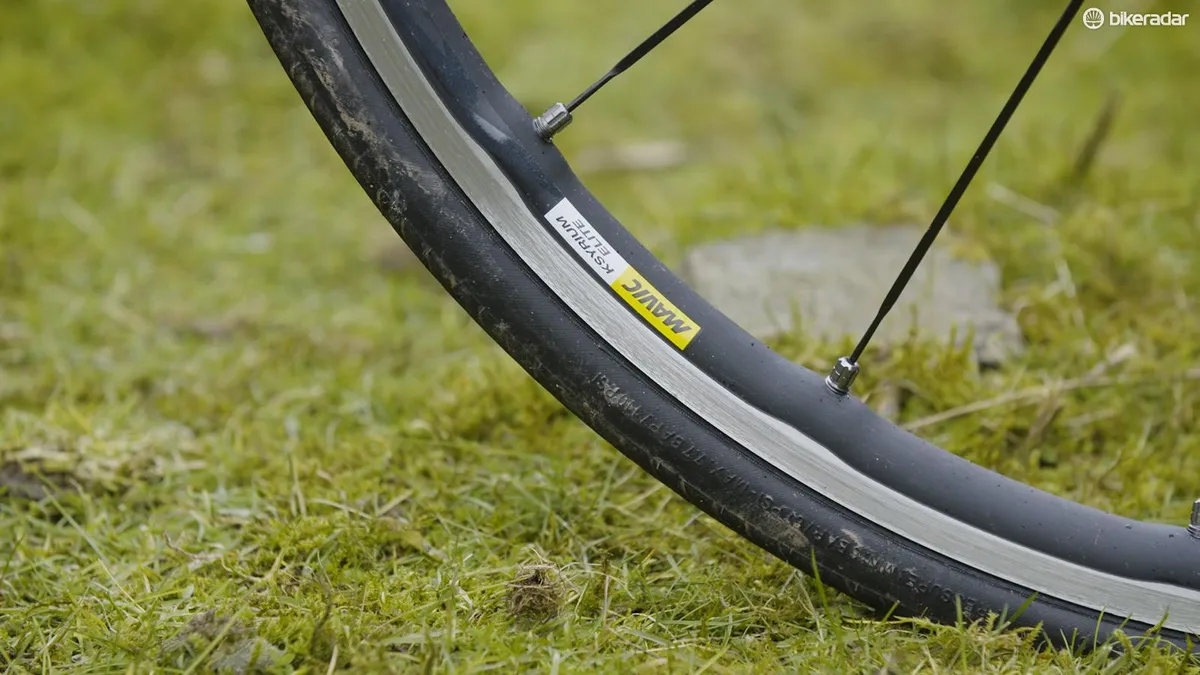We were hugely impressed with the Cannondale's new SuperSix EVO when we had the world exclusive first test back in 2015, so when it came time for our sister magazine Cycling Plus to round up contenders for its annual Bike of the Year showdown, it was a natural choice to get hold of another specimen.
We could have gone for an all-singing all-dancing team replica, or the glittering heights of a Black Inc. edition – but we know how good the chassis is, so high-end trinkets and baubles are only going to be icing on a very fine cake. We opted for the Dura Ace equipped model, which is still self-evidently expensive, but is undeniably well-equipped for the money.
As you’d imagine, the Dura-Ace drivetrain and brakes both work with impeccable precision. Cannondale's second-tier Si crank, which has been lightened and improved by a new mid-range SpideRing (on the top SI SL model it’s the machined masterpiece 10-arm one-piece version; here it’s a new eight-arm item) is a welcome addition. The tooth profiles work well with Shimano, with slick shifts up and down the order of the day. The SpideRing certainly looks a whole lot classier than the previous version's off-the-shelf FSA rings and bolt-on spider, but what's important is the superb stiffness, and that it’s lighter than the Dura-Ace unit it replaces too.

The eight-arm SpideRing is a handsome and slick-shifting addition
The wheels may look a little modest in superbike company. But the new Kysrium Elites feature a reshaped, ISM 4D-machined rim that’s a little wider than of old, and they’re shod with Mavic’s much improved Yksion Griplink/Powerlink combo in a UK road friendly 25c width. At 1550g a pair they’re not exactly a hefty set of hoops.
Shifting some weight from the 'system'
Looking around the EVO chassis, at first glance its hard to see what exactly has changed on a frame that shares so much DNA with the groundbreaking lightweight original. Both the frame and fork are, however, completely redesigned from the ground up.
The weight was reduced by the way in which Cannondale developed its ‘BallisTec’ carbon structure in both frame and fork; that and introducing the slender 25.4 seatpost standard that debuted on the Synapse. The ‘system’ weight (so that’s frame-fork-headset-seatpost) is down by 70g, impressive on a frame that already weighed under 800g.

The EVO's ground-up redesign results in a 'system' weight of just 1,303g
A lot of the savings are down to the new super-slender looking fork; the slim lines manage to combine improved lateral stiffness with micro-suspension SAVE layup technology Cannondale previously introduced into chainstay design. This allows the fork to move fore and aft without twisting or flexing sideways.
In total the actual frame is a little heavier at 777g (56cm) compared to 760g for the old one, but that's before you factor in a fork (280g as opposed to the previous 320g), the headset (66g compared with 80g, with the lower crown race integrated) into the fork rather than a separate part and the dedicated seatpost (180g compared to 210g for the older one).
Once you consider it as a ‘system’ and compare it to headline-grabbers like Trek's Emonda SLR10 (1312g); and big rival Specialized S-Works Tarmac (1718g), the EVO wins out at 1303g.
Direct and nimble, yet outstandingly smooth
On the road the EVO has a wonderfully direct and nimble feel. The stiffness in the front end makes for an instant response to directional changes that you’ll simply never tire of. Its ability to hit its mark every time, through every corner, no matter how technically challenging, is truly remarkable – in fact Bianchi's Specialissima is arguably the only bike we've tried that comes close, and that’s nearly twice the price.

The fork is infused with Cannondale's SAVE technology, resulting in a silky front end
We took the EVO out in dry conditions, in the rain and on sub-zero rides and it never felt anything but surefooted (obviously with us riding to the conditions). Climbing is a great experience too: the lightness of touch required to manoeuvre the bike translates into an agile, flighty ascender that possibly encourages out of the saddle efforts.
Yes, the 52/36, 11-28 gearing favours stronger climbers. But we felt perfectly at home with the range and really appreciated the extra available grunt on descents and rolling terrain.
What we find most impressive with the EVO however is just how comfortable it is. For something that was conceived as an out-and-out professional level-racing lightweight, it’s stunning. Cannondale has managed to infuse just enough of the Synapse's DNA into the mix to add an all-important level of smoothness that counters the rigid lightweight feel the bike exudes.
While the EVO doesn’t have the whole split-seat tube ‘power pyramid’ from the Synapse, it does have a radically slender seat tube that flares massively at the bottom bracket shell (using the Cannondale-only wider BB30a standard). The seat tube layup is directional, which allows the frame to maintain, or in fact improve rigidity through the drivetrain over the old EVO (by a claimed 8.8%).
At the same time the seat tube has more flex, combined with both sets of stays allowing more vertical movement, and is topped with a Synapse-spec slimline 25.4mm seatpost. It's not quite as active as the Pinarello's K8s or Trek’s radical Madone, but it has more than enough – and done simply too.

The custom-colour matched Fizik Arione saddle gave us plenty of room for manoeuvre
On rolling terrain its easy to hold a high pace aboard the EVO. There's no significant buzz off bad surfaces, even though this model only comes with a C1 alloy bar and stem setup, which would certainly transmit any unwelcome vibrations from rougher roads if mounted to an inferior chassis.
When you want to shift position, the custom-colour matched Fizik Arione saddle gives you plenty of room for manoeuvre over its long-length. Its not normally this tester's first choice from the Fizik stable, but I appreciated its characteristics here – and it's certainly comfortable and classy enough for a bike of this calibre.
Ultimately the EVO's lasting impression is of just how well-balanced a bike it is. The front end is truly compliant over poor surfaces, while the rear is smooth yet stiff under power. The 25c tyres help, and if you want to take the bike onto serious surfaces like Belgian cobbles the Evo frame is set up to allow 28s to fit.
With the EVO, Cannondale has managed to build upon everything that made the original just so good, adding improved comfort and stiffness – especially up front – and enhancing its handling hugely. If you're in the market for a superbike that’s shaped with geometry numbers from a professional rider's wishlist, combined with the comfort of one of the finest endurance machines to date, then the EVO – in whatever spec you can afford – should be at the top of your list.
The top 3 'superbikes' of 2016, featuring the cannondale supersix evo








